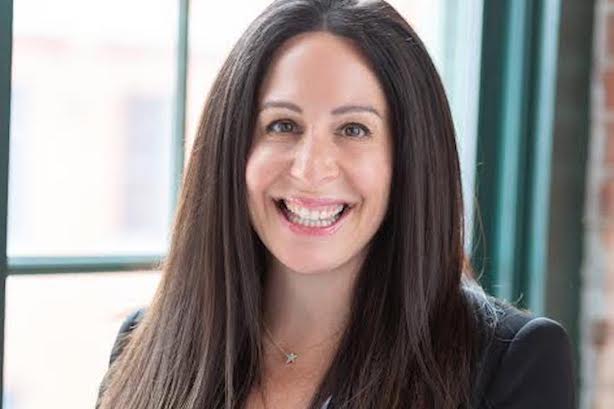Mentorship is a sexy topic that gets thrown around in a lot of interviews, but this week’s guest does more than just talk about it. We caught up with her JC Lapierre, the U.S. Chief Strategy and Communications Officer at PwC as she was wrapping up with a regular mentorship session that she offers to her team. If you really want to see change, make some changes to your schedule; allocate time to things that you say are important, such as molding a younger generation of leaders and do something about it.
“You have to listen through informal channels. Before I jumped onto this [interview] I was in what I call a coffee chat with about 15 members of my team. I do these three times a week. I open a sign up for 15 people if [they] want to just have coffee and talk for an hour. It is one of my most effective listening channels. It takes time. It takes effort to listen, but if you really pay attention, my team tells me what I need to do. My team tells me how I need to communicate better. They help tell me what steps I need to take to make it better for them. And to help us have more impact on driving our results. But it all starts with taking the time and creating the spaces to listen.”
JC leads by example through active listening to her team and their clients, and she does that through her actions as opposed to just rhetoric. In this episode learn more about the ways JC is focusing on stakeholder and audience personalization, a bit about the new partnerships at PwC, the need for good communication in a large organization, the shift in the ways that people are consuming media. Plus, JC provides us with an update on PwC’s new strategy more than six months into its launch. Hear more from JC and PwC on this episode of Marketing Trends. Here we go!
Main Takeaways
- We have Lost Valuable Strategic-Friction Time in Our Day: Amidst all of the disruption and change in the past couple of years, one of the things many people have lost is their commute time, whether that be flying to meetings in other states, or just driving or walking to the office. That friction in your day, used to allow you to reset yourself a bit in-between parts of your day and parts of your life. Having lost that means losing valuable time to be quiet, and think, and it’s important to realize this loss and create intentional space in your day to let your brain wander.
- Focusing on Stakeholder and Audience Personalization: Stress less about making sure that every single media channel is broadcasting the exact same message. The more you can personalize your messaging for individual stakeholders and for individual audiences, the better. When we talk about personalization, it can mean swapping a customer’s name into an email, but really you need to be going much deeper than that. Curating messages for customers and segments of your audience based on their other interests is the best way to get attention.
- Evolving Channel Landscape and Consumption: As things change rapidly on the media channel front, it’s important even as a large company to stay nimble and willing to try new things and experiment in channels that you are not as familiar with. You can read stories and reports about what the best new tools to use are, but testing it out is the best way to find out what works for your own brand and message.
Key Quotes
“It all starts with listening, no matter what role I’ve been in. A I’ve had like nine lives, nine careers in my time at PwC, but one of the most important things anyone can do in any relationship, personal or professional, is to truly listen and to ask really effective open-ended questions, without judgment, questions without assumptions, embedded assumptions, and to really try to understand what is it that you aspire to do? What are the impediments or obstacles to getting there? What’s the opportunity? And then when you’ve listened to a whole bunch of different data points and a whole bunch of different perspectives, you can start to build.”
“You have to listen through informal channels. Before I jumped onto this [interview] I was in what I call a coffee chat with about 15 members of my team. I do these three times a week. I open a sign up for 15 people if [they] want to just have coffee and talk for an hour. It is one of my most effective listening channels. It takes time. It takes effort to listen, but if you really pay attention, my team tells me what I need to do. My team tells me how I need to communicate better. They help tell me what steps I need to take to make it better for them. And to help us have more impact on driving our results. But it all starts with taking the time and creating the spaces to listen.”
“We call this the ADAPT framework. There’s five forces that are pushing on the world in significant ways. First is Asymmetry. We see asymmetry primarily in the income inequality gap, but you see it in other ways in which you see haves and have nots. D [stands for] disruption that gets at both technological disruption, as well as climate disruption. The second ‘A’ in ADAPT is age. In the U.S. we have an aging population; we have fewer workers than we used to and that trend is going to continue. [This means] we are going to have fewer people to work in the workforce. The P is for polarization, I think we all see it’s happening within our four walls; it’s happening across the globe, but that increased polarization is growing. [Finally,] the T is for trust.”
“The more we focus on stakeholder and audience and personalization, the easier it becomes. The team doesn’t have to keep recreating stories or recreating what they are that they’re doing [across every channel.] We have to just be consistent, simple and measured in terms of how we bring our audiences along.”
“Our people are some of our best brand ambassadors. [I want to] make sure that they feel confident, not only in telling our story, but that they are enormous parts of the story. They are executing our story and they’re building that strategy every step of the way with us.”
“The way people consume information has shifted. That’s where we (broadly not just PWC) aren’t sure what is going to land and what are the best channels to use. So we are going to try everything. [Example,] the work [we did] with Hulu and streaming is outperforming all of the metrics that we set out for it. We are [even] starting a Tik Tok channel. We are going to go to a whole bunch of different places so that we really can understand how information is being consumed and what is the easiest way to share our messages with people that might be interested in hearing them.”
Bio
J.C. Lapierre is the U.S. Chief Strategy & Communications Officer for PwC leading communications, marketing, brand, and creative teams with heart. Redefining the industry with the best team and technology to better serve our clients as they seek to build trust and deliver sustained outcomes. Committed to my nieces and nephews, adventuring around the world, upskilling teachers in Kenya with Flying Kites and cycling in Boston’s Pan-Mass Challenge to raise funds for cancer research and treatment.
—
Marketing Trends podcast is brought to you by Salesforce. Discover marketing built on the world’s number one CRM: Salesforce. Put your customer at the center of every interaction. Automate engagement with each customer. And build your marketing strategy around the entire customer journey. Salesforce. We bring marketing and engagement together. Learn more at salesforce.com/marketing.




